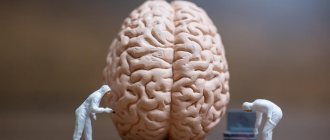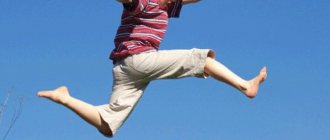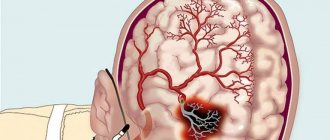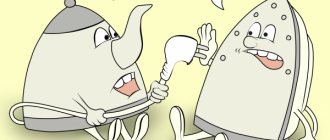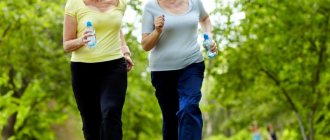Every person has the ability to hypnotize themselves. We rarely think about it, but in everyday life, many people use self-hypnosis very often. Experts have come to the conclusion that there is no suggestion from the outside. There is only self-hypnosis, which underlies both self-hypnosis and hypnosis.
Autogenic training is closely related to conscious self-hypnosis. For the first time, the famous German psychiatrist Johann Schultz spoke about autogenic training. This happened in 1932.
Recently, autogenic training according to Schultz, which over time became a classic, has again begun to arouse interest among many people. What is autogenic training according to Schultz and what is its meaning? Today we will look at these and many other questions regarding autogenic training, invented by Johann Schulz.
Rationale
Autogenic training (AT) is one of the most widely used methods of psychotherapy for patients with chronic somatic diseases (CSD). This is due to the high efficiency of the method in the framework of complex therapy, rehabilitation, sanatorium treatment and its cost-effectiveness [1]. A number of studies have shown an improvement in the psychological status of patients against the background of AT [2–4]. However, to date, the mechanisms of therapeutic action and predictors of the effectiveness of the method have not been sufficiently studied, which is necessary for the development of differentiated indications for its use.
The purpose of the study is to study the effectiveness of AT and identify factors that make it possible to predict it in the correction of the psychological state of patients with chronic disease.
Useful literature (books for downloading)
There are many books on auto-training that can become a practical guide. However, not all works are written by professional psychologists. We have prepared for you the three best, time-tested and authoritative sources.
I.G. Schultz "Autogenic training" (1983)
I.G. Schultz is a German psychiatrist and psychotherapist. The book describes in detail the essence of the methodology, describes the specifics of performing the exercises, and gives practical recommendations for conducting the training. Auto-training according to Schultz is easy to perform, but you will have to spend time learning the exercises, so it will be very useful to always have this book on hand. You can download the book for free in PDF format using this link.
R.I. Vodeyko “How to Manage Yourself” (1983)
R.I. Vodeyko is a candidate of psychological sciences; his methodology is based on the practices of domestic and foreign psychologists. The book is great for beginners. It discusses in detail the basic principles of auto-training and gives practical recommendations. With the help of this manual, you can learn to manage your emotions and body, quickly calm down and relax, increase your productivity, and get rid of stress. You can download the book for free in PDF format using this link.
H. Lindeman “Autogenic training” (2002)
Hannes Lindemann is a German doctor. The author developed his technique based on personal experience when he found himself in an extreme situation, going alone on a boat on a trip across the ocean. According to the author, only thanks to self-hypnosis and auto-training he was able to survive, did not break down, did not get sick and did not go crazy. His practice and book are based on the materials of I.G. Schulz. H. Lindeman's book presents exercises for calming, healing, getting rid of addictions, character correction and much more. You can download the book for free using these links: PDF, DOC, FB2.
V.S. Lobzin and M.M. Reshetnikov “Autogenic training” (1986)
The authors are domestic doctors. The book “Autogenic Training” is a more difficult to understand work, scientific literature that was published for doctors and psychologists. But those who are interested in auto-training at the everyday level will also be interested in reading this book. For the first time, everything is explained in it from the point of view of science and psychophysical processes. This manual helps you understand that auto-training is not a fiction, but an effective method of psychological self-help.
The book describes the history of the creation and development of auto-training, examines some other methods of mental and nervous self-regulation, examines in detail indications and contraindications (from clinical practice, with examples), and highlights the specifics of the impact of auto-training through neurophysiological and neuropsychological mechanisms. You can download the book for free in FB2 format using this link.
Material and methods
Objects (participants) of the study
The study included 325 patients with chronic disease aged from 25 to 64 years (average age 40.6±1.2 years), including 82 with irritable bowel syndrome with constipation, 82 with hypertension, 81 with spinal osteochondrosis with pain syndrome, chronic nonspecific salpingoophoritis 80.
Analysis in groups
Using the randomization method (as all patients were included in the study, they were sequentially assigned a number; every even numbered patient was included in the main group, and every odd patient was included in the control group), the patients were divided into two groups: the main group and the control group.
Before the start of psychotherapy, the main and control groups were comparable in age, gender, prescribed physiotherapy complexes, drug treatment (prescription of psychotropic drugs was excluded), as well as indicators of psychological status.
Patients of the main group ( n
=163) were prescribed psychotherapy using AT; the control group (
n
=162) did not undergo psychotherapy.
To study predictors of AT effectiveness in the main group, two subgroups were identified. Subgroup A included 128 patients whose condition returned to normal during the observation period, subgroup B included 35 patients whose condition improved by the end of observation. A comparative analysis of the background indicators of the selected subgroups was carried out.
Study design
An open, single-center, observational study was conducted.
Eligibility Criteria
Inclusion criteria:
– patient age from 25 to 64 years;
– presence of chronic disease.
Exclusion criteria:
– mental illnesses (codes F01–F99 according to the International Classification of Diseases, 10th revision);
– taking psychotropic drugs.
Conditions
The study was conducted in a hospital setting at the National Medical Research Center for Rehabilitation and Balneology of the Russian Ministry of Health (Moscow).
Duration of the study
The duration of the study was 3 years (from 2014 to 2016), the observation period for each patient was 3 weeks.
Description of medical intervention
AT was carried out according to our modified method [5], which includes the following main elements:
1) verbal formulas of suggestion (suggestion) to achieve a feeling of relaxation, warmth and lightness in the face, neck, arms, back, abdomen, legs, whole body, as well as a feeling of peace;
2) visualization - patients were asked to remember not the formulas of suggestion, but the pleasant sensations that arise in a state of relaxation and peace, and associate these sensations with a visual symbol (“relaxation figure”).
During independent training, it was recommended to reproduce the state of relaxation by looking at the “relaxation figure” or imagining it. Classes were conducted in small groups (3–5 patients) 4 times a week (total course 12 lessons).
Main outcome of the study
The level of psychological adaptation, anxiety and depression was assessed according to survey data at the beginning and end of observation.
Methods for recording outcomes
Psychological examination was carried out at the beginning and end (after 3 weeks) of the course of treatment using the Abbreviated Multifactorial Personality Inventory (AMPI) [6], the Spielberger Anxiety and Anxiety Inventory (SATS) [7], and the Beck Depression Inventory (BDS) [8]. .
Ethical review
The study was approved by the local ethics committee of the Federal State Budgetary Institution “National Medical Research Center for Rehabilitation and Balneology” of the Russian Ministry of Health (protocol No. 2 of 06/01/16).
Statistical analysis
Principles for calculating sample size
: The sample size was not previously calculated.
Methods of statistical data analysis:
Statistical data processing was carried out using the Statistica v software package. 10.0 (StatSoft, USA). When analyzing the material, methods of mathematical statistics were used: Spearman's correlation coefficient, Wilcoxon test for paired measurements. The description of the results presents mean values and standard deviations.
How does auto training work?
The mechanism of action of autotraining is not yet fully understood. Scientists suggest that it operates on the principle of biofeedback. Autotraining strengthens the connection between consciousness and body, allowing a person to influence those reactions of the body that he, as a rule, is not able to control. Similar improvements occur after relaxation and meditation
when, through the effort of consciousness, a person focuses attention on one process or object, pushing external stimuli into the background.
Exercises for autogenic training
Conduct your first training sessions under the guidance of a specialist. Speak all suggestions in a monotone voice.
The first stage is relaxation
Exercise “Pleasant calm and relaxation”
Target
: calm down. Repeat the suggestions until you are as relaxed as possible. You need to achieve an unemotional, sleep-like state. Suggestion options: “I am calm,” “I am completely calm,” “my face is relaxed, I feel the calmness of my face,” “my neck and shoulders are completely relaxed.” Continue repeating suggestions for each limb separately and for the torso.
Exercise “Pleasant heaviness”
Target
: relax the muscles. Say: “my right hand is getting heavier,” “my left hand is getting heavy,” “my arms are getting heavy,” “my right leg is getting heavy,” “my left leg is getting heavy,” “my legs are getting heavy,” “my arms and legs are getting heavy.” heavy." The sensations are interesting: heaviness in the body and limbs is combined with a general feeling of lightness.
Exercise “Pleasant warmth”
Target
: increased blood flow. Say: “warmth is spreading through my right hand”, “warmth is spreading through my left hand”, “warmth is spreading through my hands”, “warmth is spreading through my right leg”, “warmth is spreading through my left leg”, “through my legs warmth is spreading,” “warmth is spreading through my arms and legs.” As a result of the exercise, the body and limbs become warmer and relax even more. Do not apply to the face.
Exercise "Breathing"
Target
: breathe deeply and calmly. Say 5 or more times: “I am breathing slowly and calmly,” “I am breathing very lightly,” “I am breathing deeply,” “my breathing is even and calm, very light and deep.”
Exercise options for affecting the heart and blood vessels
Exercise "Heart"
Target
: improve intracardiac and coronary blood flow, relieve cardiac pain. Say until the pain, discomfort and fear are minimized: “my heart beats strong and evenly”, “I feel how warmth penetrates every cell of my heart”, “pain leaves my heart”, “my heart works well and is getting better and better."
Exercise "Pulse"
Target
: normalize the heartbeat, restore the correct heart rhythm. Repeat at least four times: “my heart beats smoothly,” “my heart beats calmly,” “my heartbeat is rhythmic, like a clock.”
Exercise “Solar Plexus”
Target
: normalize blood flow in the systemic circulation, blood supply to internal organs and relax the diaphragm. Say 5 times: “I have warmth in the solar plexus area, which spreads throughout my body, pleasantly warming me and my insides (you can specify: “my back”, “my stomach”, etc.).
Exercise "Chest"
Target
: normalize blood circulation in the pulmonary circulation, improve well-being with cardiac shortness of breath, get rid of the feeling of lack of air. Repeat 4 times: “Everything that is in the chest area does not bother me, I feel warm and pleasant, calm and easy.” Between sentences, pause for breathing exercises: on a count of one or two, take a slow deep breath; on a count of three or four, take a slow, deep exhale.
Exercise "Cool Forehead"
Target
: get rid of headaches, lower blood pressure, in case of hypertensive crisis or heat stroke, severe anxiety. Say up to 4 times: “My forehead is cool, my head is clear, my thoughts are light, I am calm/calm...”.
results
Main results of the study
According to the data obtained (see table),
Dynamics of psychological test scores for 1 month in patients of the main and control groups (DM±m) Note. * — p<0.05; ** — p<0.01; *** — p<0.001. in the main group by the end of the observation there was a significantly more pronounced decrease in indicators on scales 1, 2 and 7 and an increase in values on the 9th scale of the SMOL test, which indicates a decrease in the level of anxiety, tension, fixation of attention on one’s own sensations, increased activity and mood against the background of AT.
In the main group, a significantly more pronounced ( p
<0.001) compared to the control, a decrease in the level of reactive and personal anxiety according to the ShTT and a decrease in indicators according to the BDS.
The study of the mechanisms of action of AT revealed the following correlations: changes in indicators on the ShTT and the 2nd SMOT scale correlated with the dynamics of systolic blood pressure in patients with hypertension ( r
=0.51,
p
<0.001 and
r
=0.46,
p
<0.01, respectively);
dynamics of indicators on the ShTT, ShDB, 2nd and 9th SMOL scales - with the severity of pain according to the visual analog pain scale in patients with chronic nonspecific salpingo-oophoritis ( r
=0.54,
p
<0.001;
r
=0.44
p
<0.01;
r
=0.55,
p
<0.001 and
r
=–0.45,
p
<0.01, respectively), spinal osteochondrosis (
r
=0.50,
p
<0.001;
r
=0.42,
p
<0.01;
r
=0.48,
p
<0.01 and
r
=–0.41,
p
<0.01, respectively) and irritable bowel syndrome (
r
=0.57,
p
<0.001;
r
=0. 39,
p
<0.05;
r
=0.48,
p
<0.01 and
r
=–0.38,
p
<0.05, respectively).
Analysis of predictors of the effectiveness of AT revealed in the subgroup with an improvement in the psychological state significantly higher background (before treatment) indicators for the 4th (62.1 ± 1.58 and 47.2 ± 0.96 T) than in the subgroup with its normalization -score accordingly; p
<0.001) and 6th (61.3±1.97 and 50.1±0.87 T-scores, respectively;
p
<0.01) SMOL scales.
BDS scores above 20 points (indicating the presence of a moderate or severe degree of depression) before treatment were detected in 11 (31%) patients in subgroup B, and only 2 (1.6%) patients in subgroup A (χ2 = 29, 5; p
<0.01).
Additional Study Findings
Analysis of the effectiveness of AT depending on the nature of the underlying pathological process did not reveal significant differences in the dynamics of psychological status in patients with various chronic diseases.
Adverse events
There were no adverse events.
Discussion
Summary of the main finding of the study
The use of AT not only improves the psychological status of patients, but also has a positive effect on the main manifestations of the disease. Pronounced changes in mental status, an increased level of rigidity and a reduced level of control over one’s behavior make it possible to predict the insufficient effectiveness of A.T. Predictors of the high effectiveness of the method were a moderate decrease in the level of psychological adaptation, as well as such features as determination and perseverance in achieving the goal.
Discussion of the main result of the study
The positive effect of AT on the psychological status of patients with CHD occurs mainly due to the reduction of anxiety, tension, fixation of attention on negative sensations, sensitivity to stress, as well as due to an increase in the activity and mood of patients. Action of A.T. nonspecific, i.e. its effectiveness does not differ in patients with different chronic diseases. Application of A.T. allows not only to improve the psychological status of patients, but also has a positive effect on the main manifestations of the disease. Thus, a decrease in blood pressure in patients with hypertension was associated with a decrease in the level of anxiety, and a decrease in the severity of pain in people with nonspecific salpingoophoritis, osteochondrosis of the spine and irritable bowel syndrome was associated with an increase in psychological stress resistance, activity, mood and a decrease in the level of anxiety and tension .
The study of predictors of AT effectiveness revealed that an increase in indicators on the BDS, 4th and 6th SMOL scales allows predicting the insufficient effectiveness of the method. Increased levels of rigidity appear to reduce the effectiveness of AT due to the tendency of patients to make excessive efforts to achieve a state of relaxation. In addition, due to the rigidity of patients’ beliefs, they are difficult to correct if there is insufficient motivation for psychotherapy. At the same time, the effectiveness of AT, the mastery of which requires regular training, was higher in patients with a high level of control over their behavior, determination and perseverance in achieving the goal.
The insufficient effectiveness of AT in patients with more pronounced changes in psychological status may be due, in particular, to the fact that significant psychological maladaptation in them significantly complicates the development of almost all psychotherapeutic techniques. It should be noted that similar data were obtained when studying predictors of the effectiveness of other methods of psychorelaxation therapy [4], which suggests common mechanisms of their action in patients with chronic disease, which determine common approaches to the use of non-drug psychocorrection.
The data obtained indicate the need for a differentiated approach to prescribing AT, the effectiveness of which is closely related to the personal characteristics of patients with chronic disease. Application of A.T. indicated in the treatment and rehabilitation of patients with chronic disease with an increased level of anxiety, a slight decrease in activity and mood. If pronounced impulsivity, rigidity, and depressive disorders are detected, the insufficient effectiveness of AT can be predicted. In these cases, it is recommended to use other methods of psychotherapy or the combined use of AT and psychopharmacotherapy.
Limitations of the study
The results of this study require clarification on samples of patients with other chronic diseases in outpatient settings.
Ideomotor training.
The effect of real and imaginary movement formed the basis of ideomotor training. Independent use of this technique is impossible due to the specifics of the method. The basis of ideomotor training is a similar effect of real and imaginary movement, but only if the imaginary movement was previously mastered in reality. Ideomotor training is the next logical step after mastering the method of neuromuscular relaxation, when motor relaxation exercises can be transformed into their mental reproduction.
- Part 1
- Part 2
Next article About me and the site (note dated September 13, 2020) Previous article Psychoprevention of stress. Part 2

